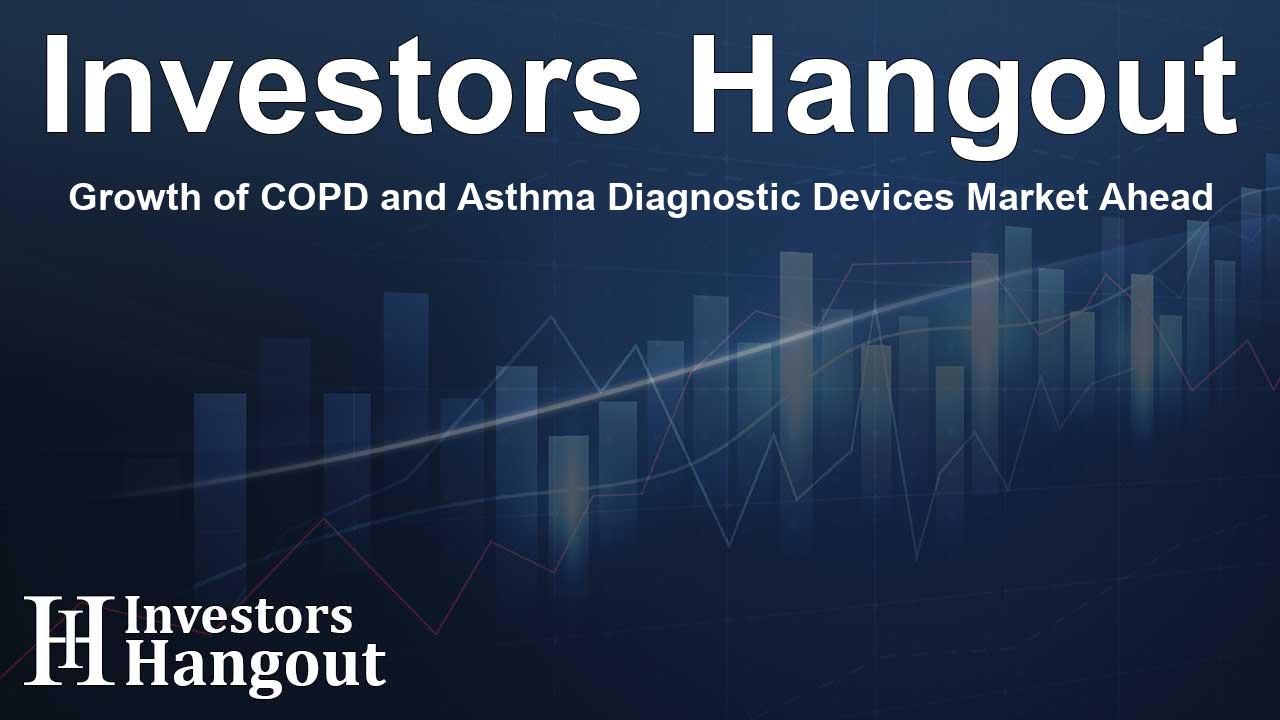Growth of COPD and Asthma Diagnostic Devices Market Ahead

Future of COPD and Asthma Diagnostic Devices Market
The market for COPD and asthma diagnostic and monitoring devices is rapidly evolving, with significant advancements projected to shape the future landscape. Currently valued at approximately USD 7.77 billion in 2023, it's expected to soar to over USD 16.12 billion by 2032, reflecting a compound annual growth rate (CAGR) of 8.45% throughout the forecast period. This growth is primarily fueled by rising incidences of respiratory diseases and technological advancements in medical devices.
Driving Forces Behind Market Growth
One of the primary drivers of the COPD and asthma diagnostic devices market is the increasing prevalence of these conditions globally. The World Health Organization cites COPD as the third leading cause of death worldwide, resulting in more than 3 million deaths each year. Furthermore, asthma affects more than 339 million individuals globally, with projections indicating a potential increase of 100 million cases by 2025, largely due to urbanization and pollution.
The Role of Technological Innovations
With such alarming statistics, the need for effective diagnostic and monitoring solutions is clearer than ever. The adoption of digital health technologies is revolutionizing the landscape. Manufacturers are increasingly integrating advanced features like artificial intelligence and data analytics into their devices, enabling earlier detection and personalized treatment plans. Innovations like smart inhalers, which allow tracking of medication usage and reporting of real-time data, exemplify this trend. These devices are gaining popularity and are expected to reach a global penetration of 25 million units.
Telehealth: A Growing Trend
Telemedicine has emerged as a significant trend in respiratory care. As remote monitoring becomes more commonplace, the number of telemedicine consultations for respiratory diseases is projected to quadruple in the upcoming years. This surge is attracting momentum from investors, as evident in the substantial venture capital investments in health tech that exceeded USD 40 billion in 2023.
Future Landscape and Global Outlook
As we look towards the future, the outlook for the COPD and asthma diagnostic devices market appears encouraging. Accessibility and affordability are expected to improve, particularly in emerging markets. The Asia-Pacific region, characterized by its extensive population and increasing healthcare investments, is leading this charge. The European Respiratory Society has noted that respiratory diseases impose an economic burden exceeding USD 380 billion annually in Europe, emphasizing the urgent need for innovative solutions and proactive management strategies.
Market Challenges and Opportunities
Despite the promising growth, the market faces challenges such as the high cost of advanced diagnostic devices, which hinders access in lower-income regions. In 2023, sophisticated diagnostic devices averaged a prohibitive USD 1,500, creating significant barriers for many healthcare facilities, especially in rural areas. While efforts to increase accessibility are underway through various funding initiatives, the demand for these devices in underserved regions remains critically high.
Innovations in COPD Management
The COPD diagnostic devices market is continuously witnessing innovative advancements. For instance, the introduction of connected inhalers and smart technologies allows for more effective monitoring and management of respiratory conditions. Companies are focusing on research and development to enhance their product offerings, ensuring that they remain competitive in this growing industry.
Company Dynamics and Market Players
The competitive landscape is characterized by key players like Becton Dickinson and Company, Medtronic plc, and Vyaire Medical, who collectively hold a significant share of the market. Their strategic initiatives and relentless focus on innovation have been pivotal in continuing to meet the evolving healthcare demands.
Frequently Asked Questions
What is the projected market size for COPD and asthma diagnostic devices?
The market is expected to grow from USD 7.77 billion in 2023 to USD 16.12 billion by 2032.
What factors are driving the growth of this market?
Increasing occurrences of respiratory diseases and advancements in diagnostic technology are the primary growth drivers.
Which region is leading in the COPD and asthma market?
The Asia-Pacific region is currently leading due to its large population and improving healthcare infrastructure.
What are smart inhalers and their significance?
Smart inhalers are advanced devices that track medication usage and provide real-time data to enhance patient management.
What challenges does the market face?
Accessibility is a major challenge due to the high costs of diagnostic devices, especially in low-income regions.
About Investors Hangout
Investors Hangout is a leading online stock forum for financial discussion and learning, offering a wide range of free tools and resources. It draws in traders of all levels, who exchange market knowledge, investigate trading tactics, and keep an eye on industry developments in real time. Featuring financial articles, stock message boards, quotes, charts, company profiles, and live news updates. Through cooperative learning and a wealth of informational resources, it helps users from novices creating their first portfolios to experts honing their techniques. Join Investors Hangout today: https://investorshangout.com/
Disclaimer: The content of this article is solely for general informational purposes only; it does not represent legal, financial, or investment advice. Investors Hangout does not offer financial advice; the author is not a licensed financial advisor. Consult a qualified advisor before making any financial or investment decisions based on this article. The author's interpretation of publicly available data shapes the opinions presented here; as a result, they should not be taken as advice to purchase, sell, or hold any securities mentioned or any other investments. The author does not guarantee the accuracy, completeness, or timeliness of any material, providing it "as is." Information and market conditions may change; past performance is not indicative of future outcomes. If any of the material offered here is inaccurate, please contact us for corrections.